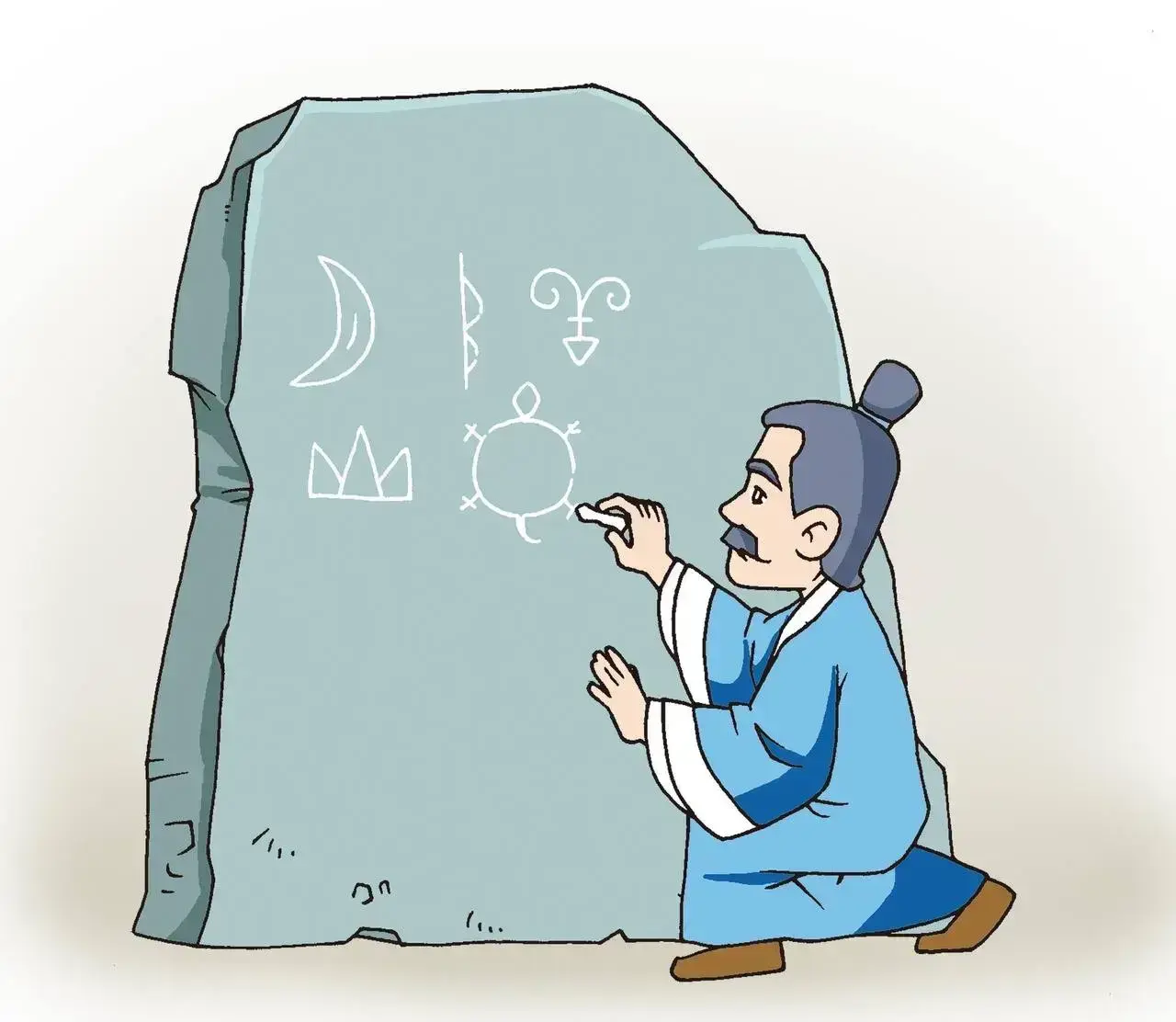By BI Weizi
According to Han Feizi, one of the most important philosophical classics in ancient China, Cang Jie was an official historian of the Yellow Emperor and the inventor of Chinese characters, which are invaluable in recording Chinese civilization.
Before inventing characters, ancient people knotted ropes to remember things, known as the "rope knot tying" method. A big knot represented a big thing, and a small knot represented a small thing. Later symbols were carved on bamboo to record information. With the progress of civilization, things were becoming more and more complicated, and these methods were far from adequate to meet people's needs. This resulted in an urgent demand for characters to be developed.
Cang Jie, under the order of the Yellow Emperor, was determined to create a specific style of writing. It was said he got inspiration from the hoofprints of animals. He was told by a hunter that different hoofprints represented different animals. Cang Jie believed that if he could capture the particularity of every single thing on earth in a single painting, writing would become possible.
From that day on, Cang Jie observed everything very carefully, including the distribution of stars in the sky, the appearance of mountains and rivers on the ground, the traces of birds, animals, insects and fish, and the shapes of grasses and trees. He then drew different symbols and determined the meaning of each symbol. This is how the original characters were invented and Cang Jie is likely to be forever known as the representative figure who summarized and organized writing and contributed to the formation of Chinese characters.



Leave a Comment